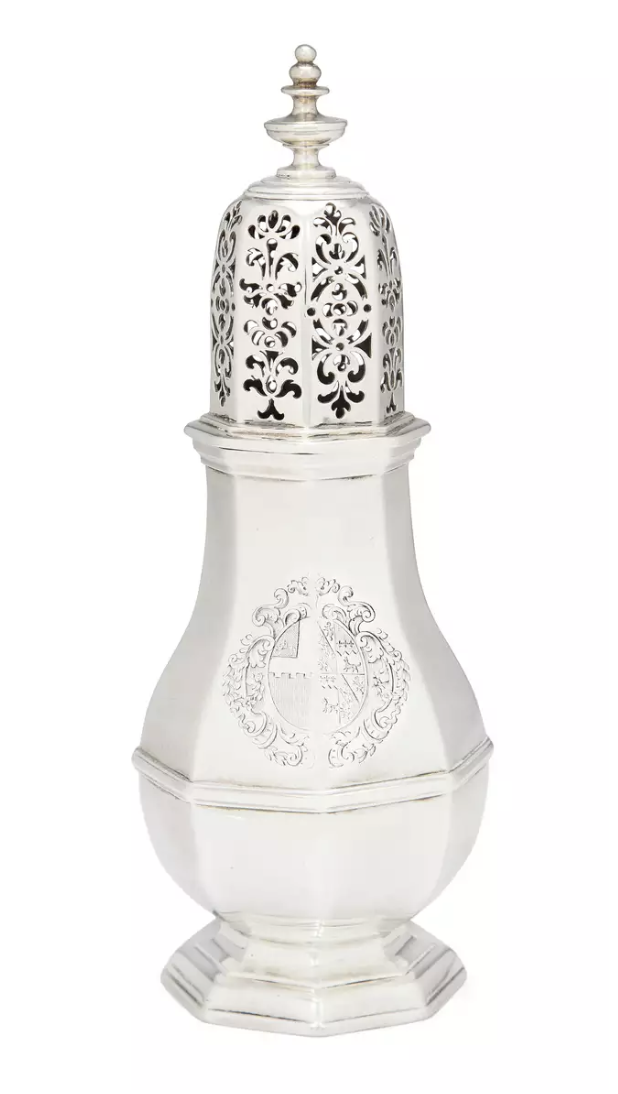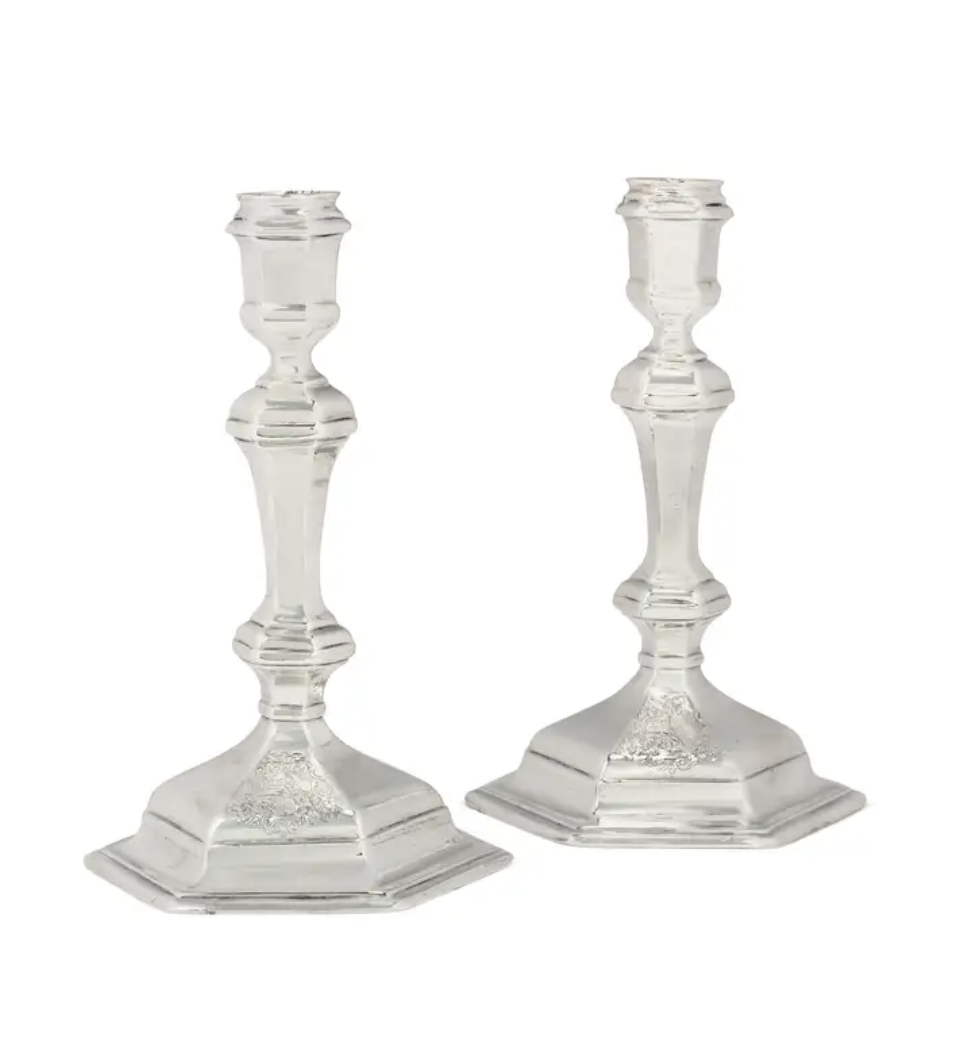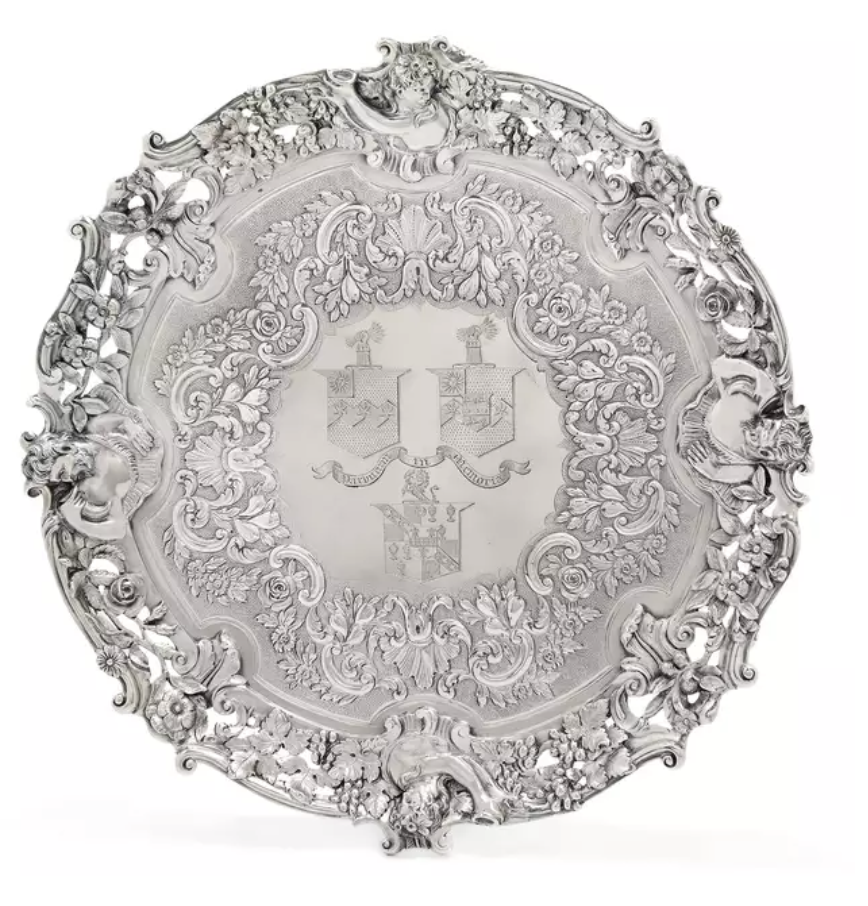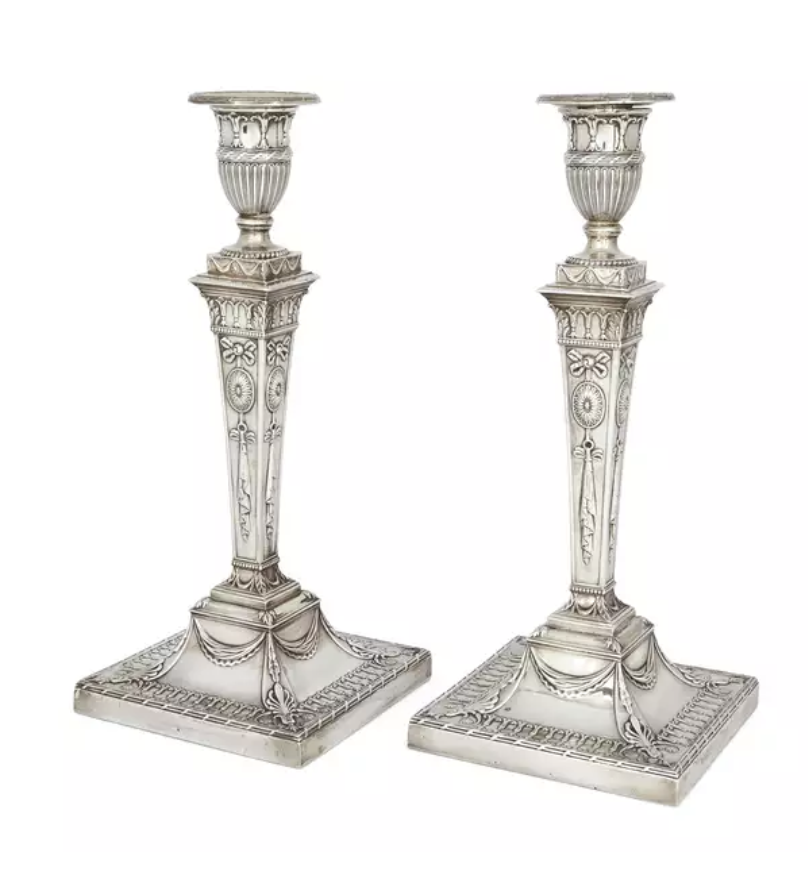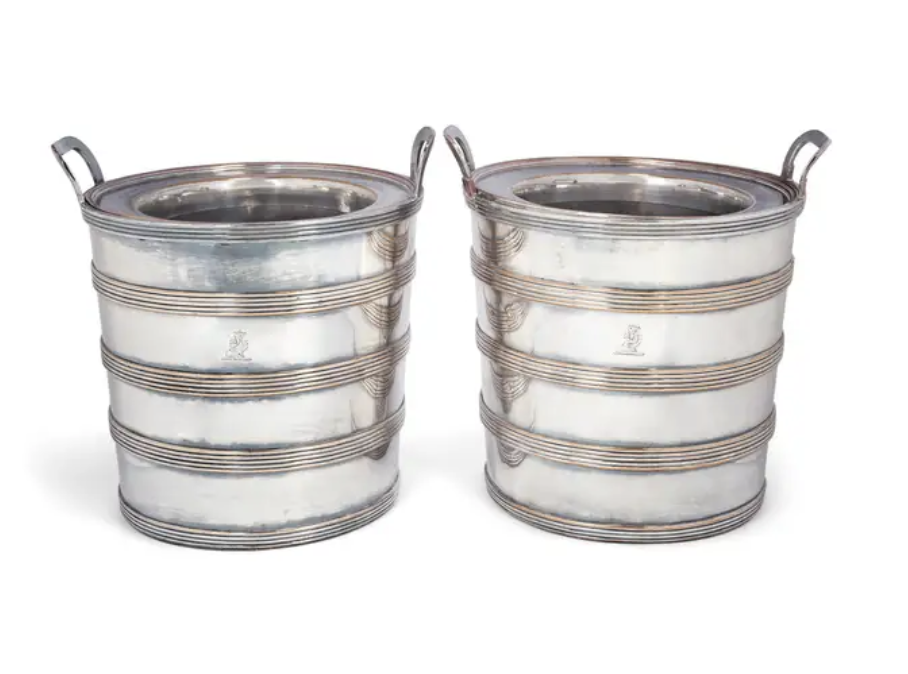Aside from the practical and aesthetic functions of silver, this precious metal acts as a vast repository of historical information and a window into social, political and economic events that have occurred over the centuries. Studying the variations in style, purity, abundance and form in British silver alone provides us with a wealth of material relating to how people lived and the impact that global and domestic events had on society, fashion, politics and economic environments. Silverware reflects human experience: it provides a link between past and present, and, perhaps most significantly, is a collecting field that sets its devotees on a path of perpetual discovery and learning.
Distilling centuries of silverware into one short article necessitates the omission of many of the fascinating facts and figures associated with the study of silver. That said, by focusing on four different themes we hope to provide you with a launch pad from which to embark on your own journey of discovery.
Reflecting societal shifts
Today we often take for granted some of the more commonplace items of silverware on the market – forks, teapots, coffee pots and sugar casters, for example – but the introduction of each of these items followed important global discoveries and events. Europe’s East India Companies spent much of the early 17th century trying to establish trade routes with China, and by 1670 London’s silversmiths had crafted the first silver teapot in response to the arrival of the novelty drink on British shores. Similarly, the colonisation of the West Indies and the sugar trade that subsequently flourished meant that sugar prices in England fell and by the end of the 18th century, sugar had become a commodity available for mass consumption. This pattern is evident in the increasing abundance of sugar casters from the last quarter of the 17th century onwards.
Lot 26: A George I silver caster, Thomas Farren
Other societal shifts echoed in the relative abundance, or absence, of silverware include religious and social changes. As Catholicism gave way to Protestantism in the 16th century, Englishmen were no longer required to set aside large sums of money to ensure their spiritual protection after death and were instead free to invest it in earthly treasures. The result? A steadily burgeoning demand for domestic silverware which could serve both a functional and a status-elevating purpose, while also providing a source of readily available cash should the need for capital arise. Likewise, the evolution of country houses and entertaining practices underwent a shift in the 17th century as open dining in great halls and casual visiting began to decline. The need for vast buffet services waned, the great table salts and ewers and basins became obsolete (the latter with the advent of forks which reduced the need for hand washing at the table!), and silverware evolved to meet new demands in dining.
Reflecting socio-political and economic affairs
Perhaps the most evident physical manifestation of socio-political events in relation to silver came about as a result of the introduction of the Britannia silver standard in the late 17th century, which lasted from 1697 until 1720. This law was introduced in response the proliferation of the crime of ‘coin clipping’, a practice by which silversmiths craftily ‘clipped’ the edges off coinage to make up for a shortfall in silver for the production of domestic silverware. By increasing the required purity of silver from 925 to 958 (parts per thousand), Wiliam III hoped to discourage the practice, which was leading to the devaluation of currency and a shortfall in coins. Aside from the challenges that this presented in day-to-day transactions in England – a clipped coin was no longer viable tender - the practice also made it difficult for William to pay his armies fighting in the Nine Years War. The Britannia silver hallmark stamped upon silverware assayed between 1697 and 1720 therefore serves as a direct reminder of the economic challenges of the time.
Lot 47: A pair of George I Britannia silver cast candlesticks.
Fluctuations in the gauge of silver over the centuries reveal similar clues. When times were tough – for example when bullion was scarce at the time of the Civil War – silverware tended to become lighter. Equally, the reintroduction of duty to be paid on silver in 1784 led to some goldsmiths electing to cut costs by reducing the weight of their works. By contrast, Regency silver is often opulent and hefty, which is perhaps explained in part by Philippa Glanville’s observation that the early 19th century saw money flow into the hands of landowners under the stimulus of a war economy. This was a result of The French Revolutionary Wars (commencing with the declaration of war by France in 1791 and lasting with two brief intermissions until Napoleon was defeated at Waterloo in 1815), which drove up the price of domestic agricultural goods. For the British landowning gentry, this was prime time for profiteering. And where better to invest their capital than in impressive Regency plate?
Lot 32: A Regency silver salver with Bacchanalian border,
Socio-political events that occurred outside of Britain are also reflected in its silverware. Louis XIV’s Edict of Fontainebleau in 1685 effectively made Protestantism illegal in France. As a result, hundreds of thousands of Protestants fled the country, including a significant number of highly skilled silversmiths who settled in England. These Huguenot craftsmen brought with them a wealth of new silversmithing techniques and had a notable impact upon the style of late 17th and early 18th century silver. Their skilful casting, use of simple shapes, and attractive ‘cut-card’ work (designs cut in thin sheet metal and soldered onto the body of a piece) soon earned them the patronage of many aristocrats. The British silversmiths had little choice but to adapt and imitate their style to meet the new demand.
Reflecting global events
Since silver is a naturally occurring element mined in specific locations around the globe (including Mexico, Peru, Bolivia and Canada), mining output has always had a bearing on downstream supply chains. Two main phases in the evolution of the silver market have been identified by historians. The first (the Potosi-Japan Cycle which spanned around a hundred years from 1540 to 1640) is credited with giving rise to the birth of global trade. The second, the Mexican Cycle (1700-1750), covered the first half of the eighteenth century and coincided with significant demographic growth in China.
During both of these cycles, the primary market for silver exports from Bolivia, Japan and Mexico was China. It swallowed vast quantities of silver ore and historians note that this necessitated Chinese exports of an equivalent value in non-silver products. The export of ceramics, silk and embroidered materials may have helped to drive the ‘chinoiserie’ fashion of 1680-1720 – a style often reflected in engraved designs on silverware of this period.
Another fashion with its roots in global events was the much-celebrated ‘Adam’ style. Successful excavations at Herculaneum (begun in 1738) and Pompeii (begun in 1755) generated a wave of interest in Classical architecture and launched a movement of classical imitation fronted by the eponymous architect, Robert Adam.
Lot 86: A pair of George VI silver candlesticks,
During the 18th century the price of silver in Britain remained fairly high, which meant that ownership of silver was predominantly restricted to the upper echelons of society. However, the discovery in the mid-19th century of new deposits of ore in the US, Mexico and Australia generated a silver boom with global ramifications. Silver flooded the market and by the end of the century, the price had fallen to just over one shilling per troy ounce. Suddenly, what had once been the preserve of the few became accessible to new swathes of society, including a burgeoning and increasingly affluent mercantile middle class. The fall in the silver price was compounded by the increasing mechanisation of silver production, which, as discussed below, led to increased output and hence ever-greater affordability.
Reflecting the rising tide of technology
Technological advances have always had the power to reshape the world: from steam power in the 18th century, to electric motors in the 19th century, and renewable energy today, innovation is one of the foremost forces impacting upon society and culture. No surprise then, that technology has also had a profound influence on silver. The introduction of metalrolling machines (initially in 1692 and later improved by John Cook in 1728), meant that silver no longer had to be hammered from ingots: it could be rolled, creating a uniform surface that could then be raised by hand. This was a huge time-saver for silversmiths and led to a significant increase in output. Prices consequently fell.
This invention was also key to the development of another important process. In the mid-18th century, a Sheffield cutler called Thomas Boulsover developed a technique whereby silver was fused to copper, effectively creating a silver ‘sandwich’ (with two sheets of silver either side of an ingot of copper). The resulting metal looked like silver, and could be worked in the same way, but sold at approximately one fifth of the price. A new material was born, and with it a new market. Though revolutionary, the popularity of Sheffield plate was relatively short lived. The invention of the electric battery in 1800 meant that electro gilding and electroplating became possible. This required a much thinner layer of silver and therefore saved on manufacturing costs.
Lot 35: A pair of Georgian Old Sheffield Plate barrel-shaped wine coolers.
Fast-forward to the 21st century and silver remains a popular field with collectors and historians. For many, its allure lies in the myriad of clues that it offers into the era and socio-political context within which it was created. This is as true of yesterday’s creations as it is of those of tomorrow. Contemporary silversmiths working today make use of advances in technology and evolutions in craftsmanship which will likely prove as interesting to silver enthusiasts of the future as those that fascinate us today. History, after all, is forever in the making!
Lot 386: Malcolm Appleby and Jane Short 'Storm',


